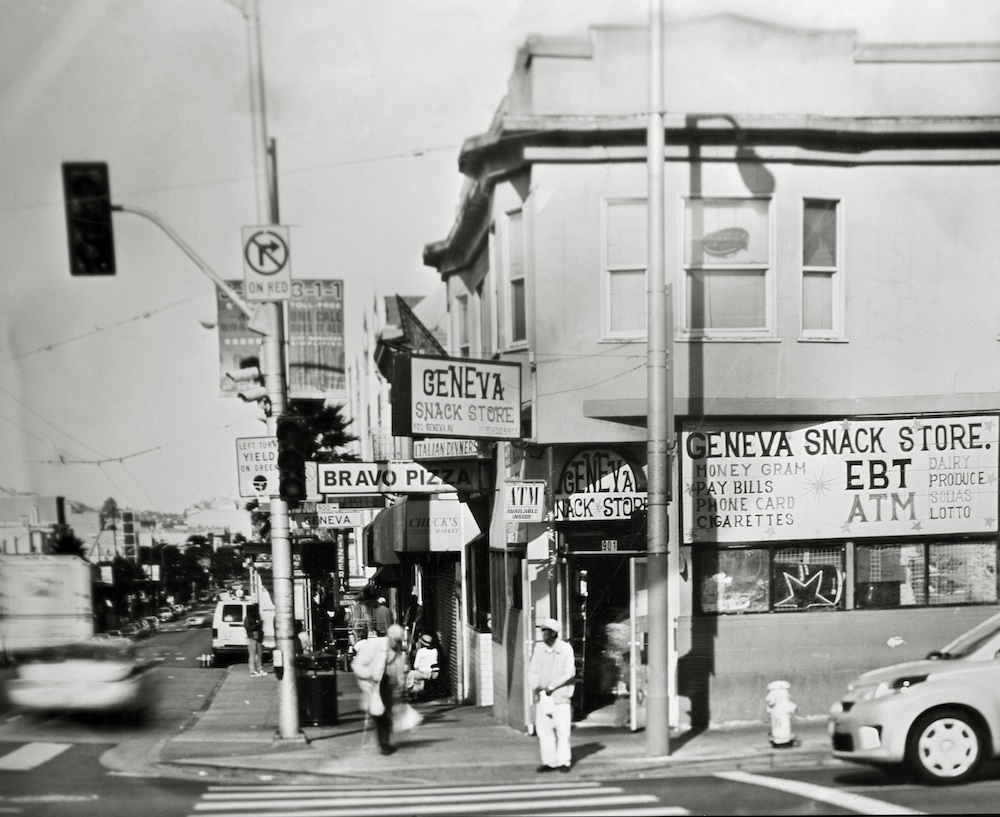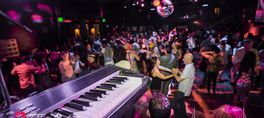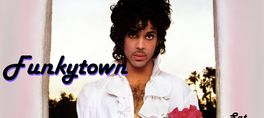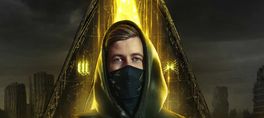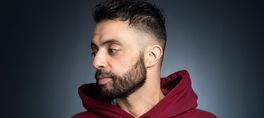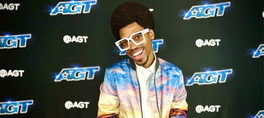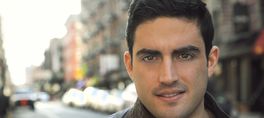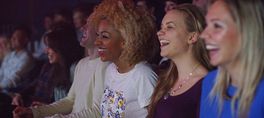Fri January 15, 2016
"Hombrecitos & Mujercitas" by Kathya Landeros and "Geneva" by Kari Orvik
SEE EVENT DETAILS
RayKo Photo Center presents
Our Fall Artists-in-Residence exhibitions
Hombrecitos & Mujercitas by Kathya Landeros
and
Geneva by Kari Orvik
Opening Reception: Wednesday, December 9th, 6-8pm
Exhibition dates: December 9th, 2015 – January 15th, 2016
RayKo Photo Center is pleased to announce the opening of our 2015 fall artists-in-residence* exhibitions. We’ve had two very talented female artists slaving away in our darkrooms for the past six months. Both Kathya Landeros and Kari Orvik have been hauling around large format cameras and making images of their communities. It goes beyond simple documentation and portraiture though, as their exhibitions will reveal.
For more than a decade, Kathya Maria Landeros has worked on long-term personal projects documenting Latino communities throughout California’s northern Central Valley and other parts of the American West. Within her family narrative there are many tales of hardworking kinfolk who emigrated from Mexico to the United States. It includes stories of her second great grandfather working in Arizona’s mines; her grandfather who worked as a Bracero (a bilateral government sponsored agricultural work program); and her grandmother and parents who came to California and worked as farmhands. Landeros’ family’s legacy of migration has revealed to her the inextricable ties between the two countries and its people. As a Mexican-American, her work seeks to explore this history - and photography - as a means by which to differentiate the Latino immigrant experience from the divisiveness of borderlands, violence, and poverty.
Landeros’ current photographic work, Hombrecitos & Mujercitas, is a chapter of this ongoing work. It focuses on adolescent Latino youth located primarily in her hometown of Sacramento. Translated from Spanish, hombrecitos and mujercitas mean little men and little women. Using a large format camera, Landeros has made portraits of little men and little women caught at an age between childhood and adulthood. It is a time in their life when they bear an ethereal and tender quality - something that has been most typically and historically assigned to adolescents, but rarely to young people of color.
Her motivation for this project was to represent these hombrecitos and mujercitas in a manner that belies the stereotyping of Latinos, and to exemplify the impressionability and vulnerability that characterize adolescence. As hombrecitos and mujercitas face the complexities and social realities of race, gender, and class, their susceptibility is especially poignant; any misgivings we hold as a society about these young men and women not only shape our public perception of Latinos, but ultimately affect the way that young Latino men and women view and shape themselves as they enter adulthood. The children in these portraits are recent immigrants, from countries such as El Salvador, Colombia and Mexico. Or, like Landeros herself, they are first generation born to immigrant parents. So, they are not only straddling the worlds of childhood and adulthood but also of two cultures. Landeros has also included portraits of her family, who served as the inspiration for this project. Hombrecitos & Mujercitas is a timely and moving project, both personal and political, pulled directly from Landeros’ experience growing up in this country and watching her nephews navigate the rights of passage into adulthood.
From her tintype portrait studio on the corner of Mission Street and Geneva Avenue, Kari Orvik has also been setting up a large format view camera to make her current series Geneva, a time-sensitive personal inquiry at this bustling intersection in San Francisco’s Excelsior district. Orvik specializes in the wet plate collodion process, utilizing this historic, handmade method to create tintypes, ambrotypes, as well as glass plate and film negatives that document the corner as it looks today.
A resident of San Francisco for nearly 20 years, Orvik has incorporated the wet plate process for the past decade into her site-specific work. The physical properties of these 19th century chemical formulas create visual allusions to the past, which offer a different palette of photographic possibilities for addressing memory and change in a rapidly changing city. Orvik has previously implemented this process photographing the aftermath of the San Bruno gas pipe explosion in 2010. After seeing the tragic event on the news, she drove her portable darkroom to the scene’s aftermath to better understand its magnitude. Her resulting wet plate images are documents that visually connect the disaster to other landscape devastations taking place before and since, and remind us that the present can be almost as unreliable as the future.
In her latest ongoing series at Geneva and Mission, Orvik uses her role as a photographer to contribute a record of who is here now and what it looks like today, recognizing that her studio’s location is also part of the corner’s eventual transformation. Over the last 2 years, she has built relationships with longtime family and small business owners, residents who work, live and pass through this lively intersection. She photographs both on the street and in the studio to create an ongoing document that acknowledges presence and records change in this neighborhood, leaving behind images as artifacts of a city that never stays the same.
Stop by RayKo Photo Center during the opening reception on December 9th to view both of these investigative projects and meet the artists to discuss their journeys and discoveries. A six-month residency is not long enough to tell the full story of what has transpired in San Francisco and Sacramento, but it is a telling period in the lives of both of these artists and both of theses regions.
Bios
Kathya Maria Landeros is a photographer and educator who lives and works from her hometown of Sacramento, California. Her photographic work is informed by her bi-cultural upbringing and often explores Mexican-American identity and the immigrant experience. For over a decade, she has worked on long-term personal projects documenting Latino communities throughout California’s northern Central Valley and other parts of the American West. The recipient of a Fulbright Fellowship, she has also photographed and lived in Mexico. She currently serves as a Fulbright Ambassador. Prior to earning a graduate degree in photography from Massachusetts College of Art and Design, she received an undergraduate degree in English literature and Hispanic studies from Vassar College.
Kari Orvik moved to the Bay Area from Alaska and became a photographer while working in affordable housing in San Francisco and taking classes at San Francisco City College. Her work focuses on memory and change over time, which she explores through the historical photographic process of tintypes. From a portable darkroom she makes long-exposure tintypes of urban landscapes that document time passing in ever-changing San Francisco neighborhoods. Her work has been featured on the cover of San Francisco Magazine, in exhibitions at SF Camerawork and the Headlands Center for the Arts, where she held a graduate fellowship. She received her MFA at UC Berkeley, and grants through the San Francisco Foundation’s Murphy and Cadogan Fellowship and the San Francisco Arts Commission. A former studio photographer at Photobooth SF, she currently operates her own tintype portrait studio in San Francisco - kariorviktintypestudio.com.
*For more information about our artist-in-residence program, click here. The deadline to submit to the 2016 residencies is November 15, 2015.
About RayKo
RayKo Photo Center & Gallery is a comprehensive photographic facility, located near the Yerba Buena Arts District, with resources for anyone with a passion for photography. Established in the early 1990’s, RayKo Photo Center has grown to become one of San Francisco’s most beloved photography darkroom spaces; it includes traditional b&w, color and alternative process labs as well as a state-of-the-art digital department, a professional rental studio, galleries, and the Photographer’s Marketplace – a retail space promoting the work of regional artists. RayKo also has San Francisco’s 1st Art*O*Mat vending machine and a vintage 1947 black & white Auto-Photo Booth and a retail store that sells all types of used film cameras, from view cameras to Leicas to a build-your-own Nikon station. Everything you need to make any type of photograph!
RayKo Gallery serves to advance public appreciation of photography and create opportunities for regional, national and international artists to create and present their work. RayKo Gallery offers 1600 square feet of exhibition space and the Photographer’s Marketplace, which encourages the collection of artwork by making it accessible to collectors of all levels. RayKo also has an artist-in-residence program to further support artists in the development of their photographic projects and ideas.
RayKo Photo Center & Gallery
428 Third Street, San Francisco, CA 94107, 415-495-3773 (ph) https://www.raykophoto.com
Tuesday-Thursday: 10-10 pm, Friday-Sunday: 10-8 pm, Monday: closed
show less
Our Fall Artists-in-Residence exhibitions
Hombrecitos & Mujercitas by Kathya Landeros
and
Geneva by Kari Orvik
Opening Reception: Wednesday, December 9th, 6-8pm
Exhibition dates: December 9th, 2015 – January 15th, 2016
RayKo Photo Center is pleased to announce the opening of our 2015 fall artists-in-residence* exhibitions. We’ve had two very talented female artists slaving away in our darkrooms for the past six months. Both Kathya Landeros and Kari Orvik have been hauling around large format cameras and making images of their communities. It goes beyond simple documentation and portraiture though, as their exhibitions will reveal.
For more than a decade, Kathya Maria Landeros has worked on long-term personal projects documenting Latino communities throughout California’s northern Central Valley and other parts of the American West. Within her family narrative there are many tales of hardworking kinfolk who emigrated from Mexico to the United States. It includes stories of her second great grandfather working in Arizona’s mines; her grandfather who worked as a Bracero (a bilateral government sponsored agricultural work program); and her grandmother and parents who came to California and worked as farmhands. Landeros’ family’s legacy of migration has revealed to her the inextricable ties between the two countries and its people. As a Mexican-American, her work seeks to explore this history - and photography - as a means by which to differentiate the Latino immigrant experience from the divisiveness of borderlands, violence, and poverty.
Landeros’ current photographic work, Hombrecitos & Mujercitas, is a chapter of this ongoing work. It focuses on adolescent Latino youth located primarily in her hometown of Sacramento. Translated from Spanish, hombrecitos and mujercitas mean little men and little women. Using a large format camera, Landeros has made portraits of little men and little women caught at an age between childhood and adulthood. It is a time in their life when they bear an ethereal and tender quality - something that has been most typically and historically assigned to adolescents, but rarely to young people of color.
Her motivation for this project was to represent these hombrecitos and mujercitas in a manner that belies the stereotyping of Latinos, and to exemplify the impressionability and vulnerability that characterize adolescence. As hombrecitos and mujercitas face the complexities and social realities of race, gender, and class, their susceptibility is especially poignant; any misgivings we hold as a society about these young men and women not only shape our public perception of Latinos, but ultimately affect the way that young Latino men and women view and shape themselves as they enter adulthood. The children in these portraits are recent immigrants, from countries such as El Salvador, Colombia and Mexico. Or, like Landeros herself, they are first generation born to immigrant parents. So, they are not only straddling the worlds of childhood and adulthood but also of two cultures. Landeros has also included portraits of her family, who served as the inspiration for this project. Hombrecitos & Mujercitas is a timely and moving project, both personal and political, pulled directly from Landeros’ experience growing up in this country and watching her nephews navigate the rights of passage into adulthood.
From her tintype portrait studio on the corner of Mission Street and Geneva Avenue, Kari Orvik has also been setting up a large format view camera to make her current series Geneva, a time-sensitive personal inquiry at this bustling intersection in San Francisco’s Excelsior district. Orvik specializes in the wet plate collodion process, utilizing this historic, handmade method to create tintypes, ambrotypes, as well as glass plate and film negatives that document the corner as it looks today.
A resident of San Francisco for nearly 20 years, Orvik has incorporated the wet plate process for the past decade into her site-specific work. The physical properties of these 19th century chemical formulas create visual allusions to the past, which offer a different palette of photographic possibilities for addressing memory and change in a rapidly changing city. Orvik has previously implemented this process photographing the aftermath of the San Bruno gas pipe explosion in 2010. After seeing the tragic event on the news, she drove her portable darkroom to the scene’s aftermath to better understand its magnitude. Her resulting wet plate images are documents that visually connect the disaster to other landscape devastations taking place before and since, and remind us that the present can be almost as unreliable as the future.
In her latest ongoing series at Geneva and Mission, Orvik uses her role as a photographer to contribute a record of who is here now and what it looks like today, recognizing that her studio’s location is also part of the corner’s eventual transformation. Over the last 2 years, she has built relationships with longtime family and small business owners, residents who work, live and pass through this lively intersection. She photographs both on the street and in the studio to create an ongoing document that acknowledges presence and records change in this neighborhood, leaving behind images as artifacts of a city that never stays the same.
Stop by RayKo Photo Center during the opening reception on December 9th to view both of these investigative projects and meet the artists to discuss their journeys and discoveries. A six-month residency is not long enough to tell the full story of what has transpired in San Francisco and Sacramento, but it is a telling period in the lives of both of these artists and both of theses regions.
Bios
Kathya Maria Landeros is a photographer and educator who lives and works from her hometown of Sacramento, California. Her photographic work is informed by her bi-cultural upbringing and often explores Mexican-American identity and the immigrant experience. For over a decade, she has worked on long-term personal projects documenting Latino communities throughout California’s northern Central Valley and other parts of the American West. The recipient of a Fulbright Fellowship, she has also photographed and lived in Mexico. She currently serves as a Fulbright Ambassador. Prior to earning a graduate degree in photography from Massachusetts College of Art and Design, she received an undergraduate degree in English literature and Hispanic studies from Vassar College.
Kari Orvik moved to the Bay Area from Alaska and became a photographer while working in affordable housing in San Francisco and taking classes at San Francisco City College. Her work focuses on memory and change over time, which she explores through the historical photographic process of tintypes. From a portable darkroom she makes long-exposure tintypes of urban landscapes that document time passing in ever-changing San Francisco neighborhoods. Her work has been featured on the cover of San Francisco Magazine, in exhibitions at SF Camerawork and the Headlands Center for the Arts, where she held a graduate fellowship. She received her MFA at UC Berkeley, and grants through the San Francisco Foundation’s Murphy and Cadogan Fellowship and the San Francisco Arts Commission. A former studio photographer at Photobooth SF, she currently operates her own tintype portrait studio in San Francisco - kariorviktintypestudio.com.
*For more information about our artist-in-residence program, click here. The deadline to submit to the 2016 residencies is November 15, 2015.
About RayKo
RayKo Photo Center & Gallery is a comprehensive photographic facility, located near the Yerba Buena Arts District, with resources for anyone with a passion for photography. Established in the early 1990’s, RayKo Photo Center has grown to become one of San Francisco’s most beloved photography darkroom spaces; it includes traditional b&w, color and alternative process labs as well as a state-of-the-art digital department, a professional rental studio, galleries, and the Photographer’s Marketplace – a retail space promoting the work of regional artists. RayKo also has San Francisco’s 1st Art*O*Mat vending machine and a vintage 1947 black & white Auto-Photo Booth and a retail store that sells all types of used film cameras, from view cameras to Leicas to a build-your-own Nikon station. Everything you need to make any type of photograph!
RayKo Gallery serves to advance public appreciation of photography and create opportunities for regional, national and international artists to create and present their work. RayKo Gallery offers 1600 square feet of exhibition space and the Photographer’s Marketplace, which encourages the collection of artwork by making it accessible to collectors of all levels. RayKo also has an artist-in-residence program to further support artists in the development of their photographic projects and ideas.
RayKo Photo Center & Gallery
428 Third Street, San Francisco, CA 94107, 415-495-3773 (ph) https://www.raykophoto.com
Tuesday-Thursday: 10-10 pm, Friday-Sunday: 10-8 pm, Monday: closed
RayKo Photo Center presents
Our Fall Artists-in-Residence exhibitions
Hombrecitos & Mujercitas by Kathya Landeros
and
Geneva by Kari Orvik
Opening Reception: Wednesday, December 9th, 6-8pm
Exhibition dates: December 9th, 2015 – January 15th, 2016
RayKo Photo Center is pleased to announce the opening of our 2015 fall artists-in-residence* exhibitions. We’ve had two very talented female artists slaving away in our darkrooms for the past six months. Both Kathya Landeros and Kari Orvik have been hauling around large format cameras and making images of their communities. It goes beyond simple documentation and portraiture though, as their exhibitions will reveal.
For more than a decade, Kathya Maria Landeros has worked on long-term personal projects documenting Latino communities throughout California’s northern Central Valley and other parts of the American West. Within her family narrative there are many tales of hardworking kinfolk who emigrated from Mexico to the United States. It includes stories of her second great grandfather working in Arizona’s mines; her grandfather who worked as a Bracero (a bilateral government sponsored agricultural work program); and her grandmother and parents who came to California and worked as farmhands. Landeros’ family’s legacy of migration has revealed to her the inextricable ties between the two countries and its people. As a Mexican-American, her work seeks to explore this history - and photography - as a means by which to differentiate the Latino immigrant experience from the divisiveness of borderlands, violence, and poverty.
Landeros’ current photographic work, Hombrecitos & Mujercitas, is a chapter of this ongoing work. It focuses on adolescent Latino youth located primarily in her hometown of Sacramento. Translated from Spanish, hombrecitos and mujercitas mean little men and little women. Using a large format camera, Landeros has made portraits of little men and little women caught at an age between childhood and adulthood. It is a time in their life when they bear an ethereal and tender quality - something that has been most typically and historically assigned to adolescents, but rarely to young people of color.
Her motivation for this project was to represent these hombrecitos and mujercitas in a manner that belies the stereotyping of Latinos, and to exemplify the impressionability and vulnerability that characterize adolescence. As hombrecitos and mujercitas face the complexities and social realities of race, gender, and class, their susceptibility is especially poignant; any misgivings we hold as a society about these young men and women not only shape our public perception of Latinos, but ultimately affect the way that young Latino men and women view and shape themselves as they enter adulthood. The children in these portraits are recent immigrants, from countries such as El Salvador, Colombia and Mexico. Or, like Landeros herself, they are first generation born to immigrant parents. So, they are not only straddling the worlds of childhood and adulthood but also of two cultures. Landeros has also included portraits of her family, who served as the inspiration for this project. Hombrecitos & Mujercitas is a timely and moving project, both personal and political, pulled directly from Landeros’ experience growing up in this country and watching her nephews navigate the rights of passage into adulthood.
From her tintype portrait studio on the corner of Mission Street and Geneva Avenue, Kari Orvik has also been setting up a large format view camera to make her current series Geneva, a time-sensitive personal inquiry at this bustling intersection in San Francisco’s Excelsior district. Orvik specializes in the wet plate collodion process, utilizing this historic, handmade method to create tintypes, ambrotypes, as well as glass plate and film negatives that document the corner as it looks today.
A resident of San Francisco for nearly 20 years, Orvik has incorporated the wet plate process for the past decade into her site-specific work. The physical properties of these 19th century chemical formulas create visual allusions to the past, which offer a different palette of photographic possibilities for addressing memory and change in a rapidly changing city. Orvik has previously implemented this process photographing the aftermath of the San Bruno gas pipe explosion in 2010. After seeing the tragic event on the news, she drove her portable darkroom to the scene’s aftermath to better understand its magnitude. Her resulting wet plate images are documents that visually connect the disaster to other landscape devastations taking place before and since, and remind us that the present can be almost as unreliable as the future.
In her latest ongoing series at Geneva and Mission, Orvik uses her role as a photographer to contribute a record of who is here now and what it looks like today, recognizing that her studio’s location is also part of the corner’s eventual transformation. Over the last 2 years, she has built relationships with longtime family and small business owners, residents who work, live and pass through this lively intersection. She photographs both on the street and in the studio to create an ongoing document that acknowledges presence and records change in this neighborhood, leaving behind images as artifacts of a city that never stays the same.
Stop by RayKo Photo Center during the opening reception on December 9th to view both of these investigative projects and meet the artists to discuss their journeys and discoveries. A six-month residency is not long enough to tell the full story of what has transpired in San Francisco and Sacramento, but it is a telling period in the lives of both of these artists and both of theses regions.
Bios
Kathya Maria Landeros is a photographer and educator who lives and works from her hometown of Sacramento, California. Her photographic work is informed by her bi-cultural upbringing and often explores Mexican-American identity and the immigrant experience. For over a decade, she has worked on long-term personal projects documenting Latino communities throughout California’s northern Central Valley and other parts of the American West. The recipient of a Fulbright Fellowship, she has also photographed and lived in Mexico. She currently serves as a Fulbright Ambassador. Prior to earning a graduate degree in photography from Massachusetts College of Art and Design, she received an undergraduate degree in English literature and Hispanic studies from Vassar College.
Kari Orvik moved to the Bay Area from Alaska and became a photographer while working in affordable housing in San Francisco and taking classes at San Francisco City College. Her work focuses on memory and change over time, which she explores through the historical photographic process of tintypes. From a portable darkroom she makes long-exposure tintypes of urban landscapes that document time passing in ever-changing San Francisco neighborhoods. Her work has been featured on the cover of San Francisco Magazine, in exhibitions at SF Camerawork and the Headlands Center for the Arts, where she held a graduate fellowship. She received her MFA at UC Berkeley, and grants through the San Francisco Foundation’s Murphy and Cadogan Fellowship and the San Francisco Arts Commission. A former studio photographer at Photobooth SF, she currently operates her own tintype portrait studio in San Francisco - kariorviktintypestudio.com.
*For more information about our artist-in-residence program, click here. The deadline to submit to the 2016 residencies is November 15, 2015.
About RayKo
RayKo Photo Center & Gallery is a comprehensive photographic facility, located near the Yerba Buena Arts District, with resources for anyone with a passion for photography. Established in the early 1990’s, RayKo Photo Center has grown to become one of San Francisco’s most beloved photography darkroom spaces; it includes traditional b&w, color and alternative process labs as well as a state-of-the-art digital department, a professional rental studio, galleries, and the Photographer’s Marketplace – a retail space promoting the work of regional artists. RayKo also has San Francisco’s 1st Art*O*Mat vending machine and a vintage 1947 black & white Auto-Photo Booth and a retail store that sells all types of used film cameras, from view cameras to Leicas to a build-your-own Nikon station. Everything you need to make any type of photograph!
RayKo Gallery serves to advance public appreciation of photography and create opportunities for regional, national and international artists to create and present their work. RayKo Gallery offers 1600 square feet of exhibition space and the Photographer’s Marketplace, which encourages the collection of artwork by making it accessible to collectors of all levels. RayKo also has an artist-in-residence program to further support artists in the development of their photographic projects and ideas.
RayKo Photo Center & Gallery
428 Third Street, San Francisco, CA 94107, 415-495-3773 (ph) https://www.raykophoto.com
Tuesday-Thursday: 10-10 pm, Friday-Sunday: 10-8 pm, Monday: closed
read more
Our Fall Artists-in-Residence exhibitions
Hombrecitos & Mujercitas by Kathya Landeros
and
Geneva by Kari Orvik
Opening Reception: Wednesday, December 9th, 6-8pm
Exhibition dates: December 9th, 2015 – January 15th, 2016
RayKo Photo Center is pleased to announce the opening of our 2015 fall artists-in-residence* exhibitions. We’ve had two very talented female artists slaving away in our darkrooms for the past six months. Both Kathya Landeros and Kari Orvik have been hauling around large format cameras and making images of their communities. It goes beyond simple documentation and portraiture though, as their exhibitions will reveal.
For more than a decade, Kathya Maria Landeros has worked on long-term personal projects documenting Latino communities throughout California’s northern Central Valley and other parts of the American West. Within her family narrative there are many tales of hardworking kinfolk who emigrated from Mexico to the United States. It includes stories of her second great grandfather working in Arizona’s mines; her grandfather who worked as a Bracero (a bilateral government sponsored agricultural work program); and her grandmother and parents who came to California and worked as farmhands. Landeros’ family’s legacy of migration has revealed to her the inextricable ties between the two countries and its people. As a Mexican-American, her work seeks to explore this history - and photography - as a means by which to differentiate the Latino immigrant experience from the divisiveness of borderlands, violence, and poverty.
Landeros’ current photographic work, Hombrecitos & Mujercitas, is a chapter of this ongoing work. It focuses on adolescent Latino youth located primarily in her hometown of Sacramento. Translated from Spanish, hombrecitos and mujercitas mean little men and little women. Using a large format camera, Landeros has made portraits of little men and little women caught at an age between childhood and adulthood. It is a time in their life when they bear an ethereal and tender quality - something that has been most typically and historically assigned to adolescents, but rarely to young people of color.
Her motivation for this project was to represent these hombrecitos and mujercitas in a manner that belies the stereotyping of Latinos, and to exemplify the impressionability and vulnerability that characterize adolescence. As hombrecitos and mujercitas face the complexities and social realities of race, gender, and class, their susceptibility is especially poignant; any misgivings we hold as a society about these young men and women not only shape our public perception of Latinos, but ultimately affect the way that young Latino men and women view and shape themselves as they enter adulthood. The children in these portraits are recent immigrants, from countries such as El Salvador, Colombia and Mexico. Or, like Landeros herself, they are first generation born to immigrant parents. So, they are not only straddling the worlds of childhood and adulthood but also of two cultures. Landeros has also included portraits of her family, who served as the inspiration for this project. Hombrecitos & Mujercitas is a timely and moving project, both personal and political, pulled directly from Landeros’ experience growing up in this country and watching her nephews navigate the rights of passage into adulthood.
From her tintype portrait studio on the corner of Mission Street and Geneva Avenue, Kari Orvik has also been setting up a large format view camera to make her current series Geneva, a time-sensitive personal inquiry at this bustling intersection in San Francisco’s Excelsior district. Orvik specializes in the wet plate collodion process, utilizing this historic, handmade method to create tintypes, ambrotypes, as well as glass plate and film negatives that document the corner as it looks today.
A resident of San Francisco for nearly 20 years, Orvik has incorporated the wet plate process for the past decade into her site-specific work. The physical properties of these 19th century chemical formulas create visual allusions to the past, which offer a different palette of photographic possibilities for addressing memory and change in a rapidly changing city. Orvik has previously implemented this process photographing the aftermath of the San Bruno gas pipe explosion in 2010. After seeing the tragic event on the news, she drove her portable darkroom to the scene’s aftermath to better understand its magnitude. Her resulting wet plate images are documents that visually connect the disaster to other landscape devastations taking place before and since, and remind us that the present can be almost as unreliable as the future.
In her latest ongoing series at Geneva and Mission, Orvik uses her role as a photographer to contribute a record of who is here now and what it looks like today, recognizing that her studio’s location is also part of the corner’s eventual transformation. Over the last 2 years, she has built relationships with longtime family and small business owners, residents who work, live and pass through this lively intersection. She photographs both on the street and in the studio to create an ongoing document that acknowledges presence and records change in this neighborhood, leaving behind images as artifacts of a city that never stays the same.
Stop by RayKo Photo Center during the opening reception on December 9th to view both of these investigative projects and meet the artists to discuss their journeys and discoveries. A six-month residency is not long enough to tell the full story of what has transpired in San Francisco and Sacramento, but it is a telling period in the lives of both of these artists and both of theses regions.
Bios
Kathya Maria Landeros is a photographer and educator who lives and works from her hometown of Sacramento, California. Her photographic work is informed by her bi-cultural upbringing and often explores Mexican-American identity and the immigrant experience. For over a decade, she has worked on long-term personal projects documenting Latino communities throughout California’s northern Central Valley and other parts of the American West. The recipient of a Fulbright Fellowship, she has also photographed and lived in Mexico. She currently serves as a Fulbright Ambassador. Prior to earning a graduate degree in photography from Massachusetts College of Art and Design, she received an undergraduate degree in English literature and Hispanic studies from Vassar College.
Kari Orvik moved to the Bay Area from Alaska and became a photographer while working in affordable housing in San Francisco and taking classes at San Francisco City College. Her work focuses on memory and change over time, which she explores through the historical photographic process of tintypes. From a portable darkroom she makes long-exposure tintypes of urban landscapes that document time passing in ever-changing San Francisco neighborhoods. Her work has been featured on the cover of San Francisco Magazine, in exhibitions at SF Camerawork and the Headlands Center for the Arts, where she held a graduate fellowship. She received her MFA at UC Berkeley, and grants through the San Francisco Foundation’s Murphy and Cadogan Fellowship and the San Francisco Arts Commission. A former studio photographer at Photobooth SF, she currently operates her own tintype portrait studio in San Francisco - kariorviktintypestudio.com.
*For more information about our artist-in-residence program, click here. The deadline to submit to the 2016 residencies is November 15, 2015.
About RayKo
RayKo Photo Center & Gallery is a comprehensive photographic facility, located near the Yerba Buena Arts District, with resources for anyone with a passion for photography. Established in the early 1990’s, RayKo Photo Center has grown to become one of San Francisco’s most beloved photography darkroom spaces; it includes traditional b&w, color and alternative process labs as well as a state-of-the-art digital department, a professional rental studio, galleries, and the Photographer’s Marketplace – a retail space promoting the work of regional artists. RayKo also has San Francisco’s 1st Art*O*Mat vending machine and a vintage 1947 black & white Auto-Photo Booth and a retail store that sells all types of used film cameras, from view cameras to Leicas to a build-your-own Nikon station. Everything you need to make any type of photograph!
RayKo Gallery serves to advance public appreciation of photography and create opportunities for regional, national and international artists to create and present their work. RayKo Gallery offers 1600 square feet of exhibition space and the Photographer’s Marketplace, which encourages the collection of artwork by making it accessible to collectors of all levels. RayKo also has an artist-in-residence program to further support artists in the development of their photographic projects and ideas.
RayKo Photo Center & Gallery
428 Third Street, San Francisco, CA 94107, 415-495-3773 (ph) https://www.raykophoto.com
Tuesday-Thursday: 10-10 pm, Friday-Sunday: 10-8 pm, Monday: closed
show less
Date/Times:
428 Third Street, San Francisco, CA 94107
The Best Events
Every Week in Your Inbox
From Our Sponsors
UPCOMING EVENTS
Great suggestion! We'll be in touch.
Event reviewed successfully.
